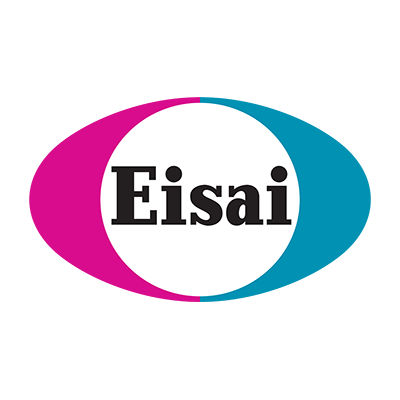预约演示
更新于:2025-05-07
Cadasil
常染色体显性遗传病合并皮质下梗死和白质脑病
更新于:2025-05-07
基本信息
别名 CADASIL、CADASIL、CADASIL (diagnosis) + [20] |
简介 A familial, cerebral arteriopathy mapped to chromosome 19q12, and characterized by the presence of granular deposits in small CEREBRAL ARTERIES producing ischemic STROKE; PSEUDOBULBAR PALSY; and multiple subcortical infarcts (CEREBRAL INFARCTION). CADASIL is an acronym for Cerebral Autosomal Dominant Arteriopathy with Subcortical Infarcts and Leukoencephalopathy. CADASIL differs from BINSWANGER DISEASE by the presence of MIGRAINE WITH AURA and usually by the lack of history of arterial HYPERTENSION. (From Bradley et al, Neurology in Clinical Practice, 2000, p1146) |
关联
5
项与 常染色体显性遗传病合并皮质下梗死和白质脑病 相关的药物靶点 |
作用机制 TNF-α抑制剂 [+1] |
最高研发阶段批准上市 |
首次获批国家/地区 奥地利 |
首次获批日期1998-02-03 |
靶点 |
作用机制 AChE抑制剂 |
原研机构 |
最高研发阶段批准上市 |
首次获批国家/地区 美国 |
首次获批日期1996-11-25 |
靶点- |
作用机制 RNA干扰 |
非在研适应症- |
最高研发阶段临床前 |
首次获批国家/地区- |
首次获批日期1800-01-20 |
45
项与 常染色体显性遗传病合并皮质下梗死和白质脑病 相关的临床试验NCT06859658
Développement et Validation d'un Biomarqueur en IRM Fonctionnelle de la Dysfonction Des Petits Vaisseaux cérébraux Dans la Maladie de CADASIL
Cerebral small vessel diseases (cSVD) are diseases of brain tissue involving vessels (arterioles or capillaries) with a diameter of less than 400 microns. Within this group, CADASIL (Cerebral Autosomal Dominant Arteriopathy with Subcortical Infarcts and Leukoencephalopathy) is the most common familial form. CADASIL is due to mutations in the NOTCH3 gene located on chromosome 19. It is considered a unique model for the study of cSVD. CADASIL begins between the ages of 20 and 40, with the appearance of cerebral white matter hyper-signals visible on MRI. Before the age of 30, patients are usually asymptomatic. To date, there are no available treatments. To test new therapeutic approaches, we need biomarkers that are robust and sensitive enough to assess the effects of these treatments at an early stage of cSVD and over a relatively short period of time.
An ideal monitoring biomarker should be repeatedly and safely usable, easily accessible, accurate, reproducible and sensitive to disease progression or pharmacological intervention.
Alterations in neurovascular coupling (NVC) have been recognized as one of the earliest functional alterations occurring during cSVD. Cerebral functional magnetic resonance imaging (fMRI) is a brain imaging technique that measures the activity of brain areas in vivo by detecting local changes in blood flow. An important advantage of blood oxygen level-dependent functional MRI is that it enables the NVC to be probed in vivo, safely and repeatedly in humans.
Our central hypothesis is that functional MRI can provide such a biomarker for monitoring CNV disease progression in vivo using a dedicated fMRI protocol that can be used on a clinical MRI scanner, is reproducible and varies according to the severity of brain MRI lesions and/or clinical manifestations in CADASIL. A functional imaging study coupled with electroencephalogram has already revealed changes in the hemodynamic response to visual or motor stimuli in patients at the early stage of the disease. This study is exploring new imaging protocols to focus on the purest vascular response.
An ideal monitoring biomarker should be repeatedly and safely usable, easily accessible, accurate, reproducible and sensitive to disease progression or pharmacological intervention.
Alterations in neurovascular coupling (NVC) have been recognized as one of the earliest functional alterations occurring during cSVD. Cerebral functional magnetic resonance imaging (fMRI) is a brain imaging technique that measures the activity of brain areas in vivo by detecting local changes in blood flow. An important advantage of blood oxygen level-dependent functional MRI is that it enables the NVC to be probed in vivo, safely and repeatedly in humans.
Our central hypothesis is that functional MRI can provide such a biomarker for monitoring CNV disease progression in vivo using a dedicated fMRI protocol that can be used on a clinical MRI scanner, is reproducible and varies according to the severity of brain MRI lesions and/or clinical manifestations in CADASIL. A functional imaging study coupled with electroencephalogram has already revealed changes in the hemodynamic response to visual or motor stimuli in patients at the early stage of the disease. This study is exploring new imaging protocols to focus on the purest vascular response.
开始日期2025-04-01 |
NCT06933212
Effetto Della DIETa mEdiTerranea Sull'Incidenza di Ictus e Sul Decadimento Cognitivo in Pazienti Affetti da Cadasil e Angiopatia Cerebrale Amiloide
The study is divided into two phases: Phase 1 (observational) and Phase 2 (dietary intervention). The goal of Phase 1 is to assess the nutritional status and dietary habits of two cohorts of patients with CADASIL and CAA. A specific aim is to evaluate adherence to the Mediterranean Diet. The objectives include analyzing patients' nutritional status, lean and fat mass, basal metabolism, and total energy expenditure. It also aims to assess the relationship between adherence to the Mediterranean Diet and the onset of stroke and cognitive decline, as well as examine stroke severity (ischemic or hemorrhagic) and its association with Mediterranean Diet adherence (MEDAS questionnaire). Additionally, the study will explore the link between diet adherence and cognitive deficits, and measure changes in biological and anthropometric parameters as a result of adopting the Mediterranean Diet.
Phase 2 is an interventional dietary study designed to evaluate the effects of the Mediterranean Diet, enriched with either extra virgin olive oil or walnuts, on stroke incidence and cognitive decline in patients with CAA and CADASIL.
Phase 2 is an interventional dietary study designed to evaluate the effects of the Mediterranean Diet, enriched with either extra virgin olive oil or walnuts, on stroke incidence and cognitive decline in patients with CAA and CADASIL.
开始日期2024-10-10 |
ChiCTR2400088550
Study on the relationship between sleep disorders and the cerebral lymphatic system in patients with autosomal dominant inherited cerebral artery disease (CADASIL) with subcortical infarction and white matter encephalopathy
开始日期2024-09-01 |
申办/合作机构 |
100 项与 常染色体显性遗传病合并皮质下梗死和白质脑病 相关的临床结果
登录后查看更多信息
100 项与 常染色体显性遗传病合并皮质下梗死和白质脑病 相关的转化医学
登录后查看更多信息
0 项与 常染色体显性遗传病合并皮质下梗死和白质脑病 相关的专利(医药)
登录后查看更多信息
1,545
项与 常染色体显性遗传病合并皮质下梗死和白质脑病 相关的文献(医药)2025-06-01·Journal of Stroke and Cerebrovascular Diseases
Menopausal hormone therapy in women with CADASIL: a health system-wide retrospective cross-sectional study
Article
作者: Fermo, Olga P ; Shourav, Md Manjurul Islam ; Caruso, Maria A ; Barrett, Kevin M ; Mendis, Dinith D ; Faubion, Stephanie S ; Meschia, James F ; Peng, Zhongwei ; Lin, Michelle P ; Zayat, Roaa
2025-06-01·Journal of Stroke and Cerebrovascular Diseases
Assessing changes on large cerebral arteries in CADASIL: Preliminary insights from a case-control analysis
Article
作者: Strobino, Kevin H ; Lopez-Navarro, Edgar R ; Kozii, Khrystyna ; Gutierrez, Jose ; Rahman, Salwa ; Khasiyev, Farid ; Paulsen, Jane S ; Barreto, Brenno R ; Mayer, Silvia V ; Spagnolo-Allende, Antonio ; Gurel, Kursat ; Bueno, Pedro G
2025-05-01·Journal of the Neurological Sciences
Peripapillary vessel wall changes correlate with disease severity in patients with cerebral autosomal dominant arteriopathy with subcortical infarcts and leukoencephalopathy (CADASIL)
Article
作者: Chi, Sheng-Chu ; Chang, Hsin-Ho ; Lee, Yi-Chung ; Liao, Yi-Chu ; Cheng, Hui-Chen ; Wang, An-Guor
4
项与 常染色体显性遗传病合并皮质下梗死和白质脑病 相关的新闻(医药)2025-01-15
·丁香园
5
丁香园神经科讨论群(498)
@所有人
看片子:40 岁男性,1 天前突发阅读困难,左侧枕部头痛。
查体:右侧视野缺损。CT 见图 A,MRI 见图 B、C。
考虑什么诊断?什么病因导致?
一眼看上去就想说 CAA,一看年龄才 40,脑叶可能有两次出血,左右枕叶,这次是左侧。
脑白质 FLAIR 点状高信号大于 10,所以重点鉴别是不是 CADASIL 或 CARASIL。
SWI 要做,家族史要问
病灶主要分布双侧颞枕叶及半卵圆中心,性质是陈旧梗死、出血及缺血改变,分布于分水岭区,主要考虑血管性病变,Moyamoya?
急性起病,存在神经系统定位体征,平扫ct见左侧枕叶出血灶,既往右侧枕叶软化灶,swi见多发微出血,头颅压水像见多发白质脱髓鞘可能。梗死及出血,定性诊断:血管病。具体哪一种建议完善血管检查,心脏彩超等协助明确疾病诊断。
9:30
诊断CAA年龄确实是个很大的问题。不过这应该是指我们常说的那种年龄相关的散发性的CAA,CAA其实还有早发型的
患者中年男性,急性起病,CT见左枕叶高密度灶,考虑脑出血,右枕叶软化灶。MR见多灶性微出血及脑白质变性,考虑遗传性脑小血管病可能性大,尤其是CADASIL、淀粉样脑血管变性,建议基因筛查。
@所有人 公布答案:
CT 和 MRI 显示少量急性脑出血、多斑点状白质高信号,提示可能是脑淀粉样血管病。
补充 PET-CT 证实脑内 β 淀粉样蛋白沉积增加。补充脑脊液检查,显示 Aβ42 和 Aβ40 水平降低,确诊「脑淀粉样血管病」。
具体什么原因引起的脑淀粉样血管病?补充基因检测后排除「遗传性脑淀粉样血管病」。
追查既往史发现,患者 5 岁时因外伤接受过神经外科手术,过程中使用了遗体来源的硬脑膜,因此推测可能是「医源性脑淀粉样血管病」。
使用尸体来源硬脑膜进行神经外科手术或神经介入治疗时,可能传播 β 淀粉样蛋白,导致医源性脑淀粉样血管病,根据目前已有报道的病例,暴露与症状发作之间潜伏期可以长达 25~45 年。
CJD 的朊蛋白可以自我复制,医源性传播可以理解。以前认为 Aβ清除障碍是 AD 和 CAA 的主要原因。β淀粉样蛋白也可以传播并复制?我还要再学习一下
疫苗
2025-01-03
·丁香园
5
丁香园神经科讨论群(498)
@所有人
看片子:44 岁男性,唐氏综合征患者,精神错乱、易怒、情绪不稳定 1 月。
查体:轻度右侧偏瘫。
MRI:双侧半球均有多发性脑叶皮质-皮质下出血,整个大脑皮层和小脑均有普遍微出血。
患者没有血管风险因素,没有服用任何药物。考虑什么诊断?
唐氏综合症可以出现淀粉样蛋白相关的 AD,CVSD 和 CAA-ri,这个主要是 CAA 脑叶出血
有多发的微出血灶,出血部位多在脑叶,非高血压性脑出血常见部位,要考虑淀粉样变吧
44 岁男性,唐氏综合征患者,精神错乱、易怒、情绪不稳定
MRI:双侧半球均有多发性脑叶皮质-皮质下出血,整个大脑皮层和小脑均有普遍微出血。患者没有血管风险因素,没有服用任何药物。考虑脑淀粉样病变
9:30
多发微出血,caa,高血压包括原醛,烟雾,cadasil,fabry,呼衰,血管炎等等原因较多,但以灰质核团周围或基底节受累为主,累及皮层的多是 caa。
这患者同时伴有急性起病的精神症状、性格改变,估计应该还有快速进展性痴呆,被唐氏掩盖了,flair 可见三处脑叶出血,符合 caa 表现。
鉴别,因为三处出血,需要鉴别原醛。还有大家说的 caa-ri,flair 并没有看到不对称的白质病变,不支持
建议完善全外显,特别是 apoe 检测,还能除外下少见类型的遗传性小血管病,比如 COL4A1;脑脊液诊断意义不大,可以除外下特殊的颅内感染
支持脑小血管病,图一T1提示左右额叶、右顶叶出血,图二三提示大小脑脑叶多发皮层、皮层皮下薇出血,深部髓质受累少,倾向考虑 CAA
@所有人 公布答案:
本例患者是唐氏综合征,通常存在「淀粉样前体蛋白」基因过度表达,所以会导致脑内淀粉样蛋白增加、堆积。
患者 MRI 呈现典型的脑淀粉样血管病变(CAA),淀粉样蛋白沉积在柔脑膜和皮质血管中,导致脑叶内出血、脑微小出血、认知障碍。
但 CAA 只有尸检时才能完全确诊,患者存活的情况下,一般根据「波士顿标准 2.0」做出判断。
CAA 目前尚无治愈方法,主要干预目标是治疗症状,本例患者后续以持续监测和支持性治疗为主,7 天后安排出院。3 月后复查 CT,脑出血基本消退。
疫苗
2023-10-10
·生物谷
本研究中,中山大学附属第三医院陆正齐教授团队联合中山大学医学院从事炎症性疾病基础研究的赵文婧教授团队,以单基因遗传性脑小血管病为研究对象,揭示了肠道微生物通过脑肠轴诱发系统性炎症
近日,中山大学附属第三医院脑病中心陆正齐教授团队在国际权威期刊Microbiome发表题为“Gut microbes exacerbate systemic inflammation and behavior disorders in neurologic disease CADASIL”的研究论文。中山大学附属第三医院脑病中心神经内科陆正齐教授、中山大学医学院赵文婧教授、中山大学医学院牟相宇副教授为共同通讯作者,中山大学医学院刘胜博士后、中山大学附属第三医院脑病中心神经内科门雪娇主治医师、中山大学医学院郭杨博士为论文共同第一作者。
CADASIL全名为伴有皮质下梗死和白质脑病的常染色体显性遗传性脑动脉病(Cerebral autosomal dominant arteriopathy with subcortical infarcts and leukoencephalopathy),是由NOTCH3突变引起的最常见的单基因遗传性脑小血管病,发病率约为千分之三,临床早期主要是偏头痛和焦虑抑郁,中年之后表现为中风和血管性痴呆等,具有早发病、高致残率和高经济负担的特点。既往研究证实,CADASIL疾病的临床表型受遗传因素和其他因素的共同作用。然而,在世界范围内,目前该病尚无针对遗传病因的治疗。研究表明,炎症免疫机制在CADASIL的发生发展中发挥重要作用。因此,探究该病免疫相关的发病机制对疾病的治疗有着重要的临床意义。
肠道微生物,和人体的免疫系统密切联系,被认为是人体的第二基因组,参与了多种神经系统疾病的发生发展。目前只有一篇16S rRNA基因测序的研究发现了与CADASIL疾病相关的肠道菌群菌属。然而,相关肠道微生物菌种在CADASIL中的作用和功能尚未可知。基于此,本研究探究肠道微生物通过脑肠轴作用于CADASIL的机制。
研究首先对CADASIL患者及家属对照的粪便和血清样本进行多组学分析,多组学研究表明CADASIL患者的肠道微生物组成、功能及代谢较对照组发生了一些显著的改变(图1、2)。
图1:CADASIL患者肠道微生物的组成和功能发生了一些改变
图2:CADASIL患者的粪便和血清代谢物的差异
宏基因组的功能通路分析表明,γ-氨基丁酸(GABA)相关代谢通路在患者的肠道菌群中显著富集;血清代谢组和神经递质检测结果也表明,谷氨酸/γ-氨基丁酸(Glu/GABA)比例在患者中显著偏高。研究团队进一步分析了GABA相关代谢通路中的5个酶,发现GABA氨基转移酶的丰度在患者组中显著偏高,并且E. siraeum和M. elsdenii对该酶的丰度起到了重要的贡献作用,而这两种细菌都是患者里显著高于健康家属。以上发现提示E. siraeum和M. elsdenii可能通过调节Glu/GABA比例进而影响CADASIL的表型。
研究团队继续发现,CADASIL患者有五种血清炎症因子显著升高,它们与肠道菌群的毒力因子相关,其中IL-1β与毒力因子VFG002555正相关(图3)。基因组分析发现F. varium拥有与VFG002555高度同源的蛋白(>50%)。肠道细菌和炎症因子的关联分析也显示F. varium与IL-1β和IL-6正相关(图4)。
图3:CADASIL患者的血清炎症因子升高,且与肠道菌群的毒力因子相关。
图4:CADASIL患者肠道微生物与血清炎症因子的关系
为明确F. varium在CADASIL疾病中的作用,研究团队首先应用细胞模型研究患者来源的F. varium的可能促炎机制,发现F. varium诱导巨噬细胞中非典型Caspase 8炎症小体的激活(图5)。进一步在Notch3鼠模型中对该机制进行验证,靶向培养和机制研究提示患者来源的F. varium菌种引发Notch3突变小鼠巨噬细胞中caspase-8依赖的非典型炎症小体激活及行为障碍(图6)。
图5:应用细胞模型研究患者来源的F. varium的作用机制
图6:在小鼠模型中验证F. varium在CADASIL发病中的作用和功能
本研究中,中山大学附属第三医院陆正齐教授团队联合中山大学医学院从事炎症性疾病基础研究的赵文婧教授团队,以单基因遗传性脑小血管病为研究对象,揭示了肠道微生物通过脑肠轴诱发系统性炎症,从而促进CADASIL发生发展的机制,为未来从炎症免疫机制出发进一步提出切实有效的CADASIL治疗手段提供了理论基础。
微生物疗法临床研究
分析
对领域进行一次全面的分析。
登录
或

生物医药百科问答
全新生物医药AI Agent 覆盖科研全链路,让突破性发现快人一步
立即开始免费试用!
智慧芽新药情报库是智慧芽专为生命科学人士构建的基于AI的创新药情报平台,助您全方位提升您的研发与决策效率。
立即开始数据试用!
智慧芽新药库数据也通过智慧芽数据服务平台,以API或者数据包形式对外开放,助您更加充分利用智慧芽新药情报信息。
生物序列数据库
生物药研发创新
免费使用
化学结构数据库
小分子化药研发创新
免费使用






